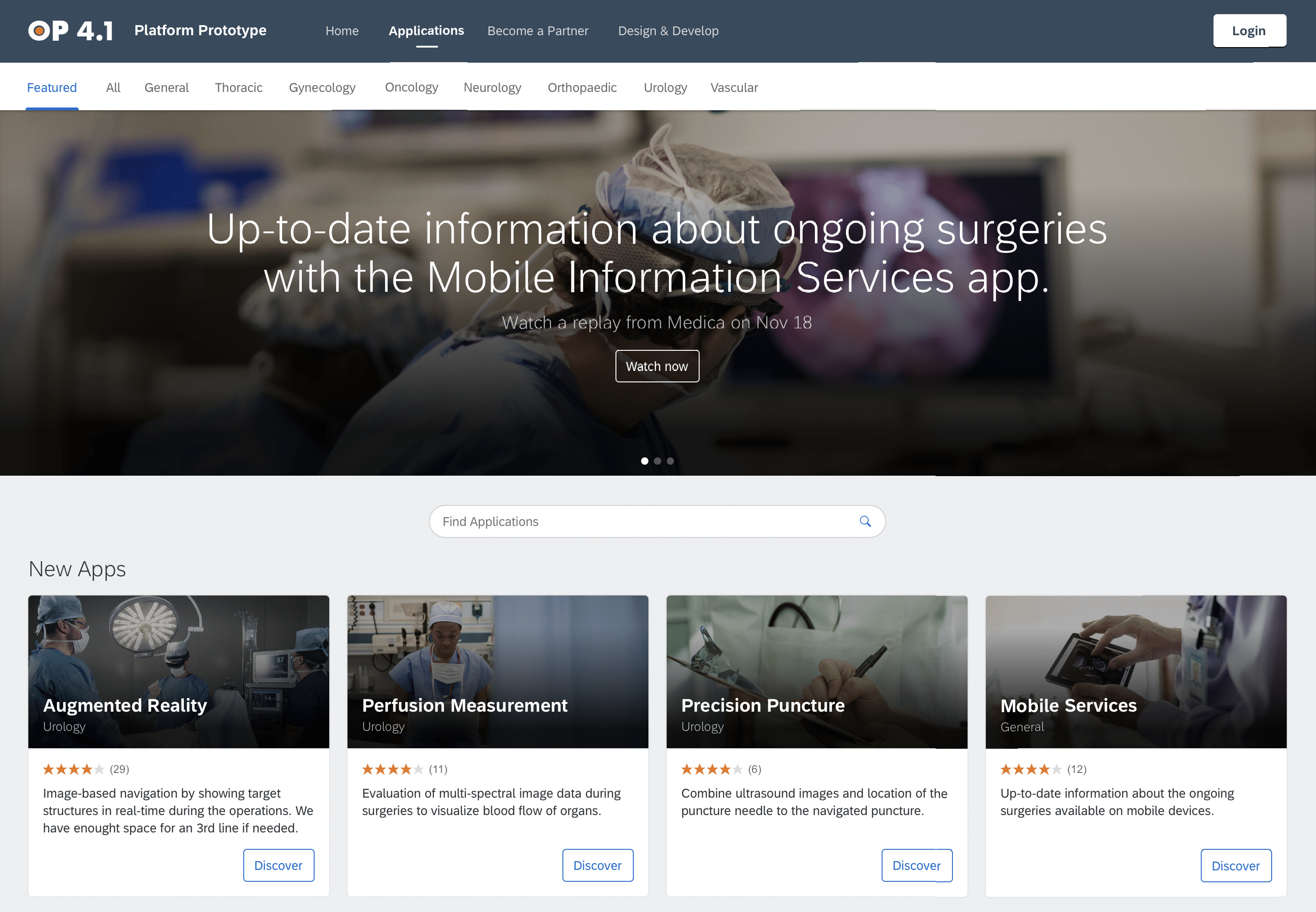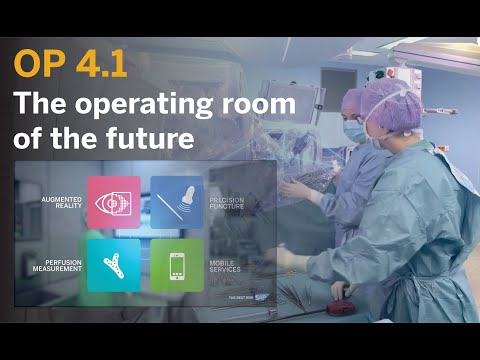Partners and their application developers are the engine of the OP 4.1 integration platform. Find out more about what they need to get their innovations to patients and how SAP supports them.
There is enormous untapped potential in the solutions developed by many small, highly innovative companies and startups, but actually getting it to patients can be a challenge. To illustrate the capabilities of the OP 4.1 prototype, four starter apps were developed during the co-innovation project and integrated in prototypes; for example, to support surgeons during a partial kidney resection.
This article is part of the series
OP 4.1: The Operating Room of the Future
Despite all the groundbreaking innovations in the healthcare sector, isolated applications are often used. As a result, the full potential is not yet being exploited. The OP 4.1 project developed a prototype of an intelligent platform for the operating room of the future. The funded project is part of the technology program “Smart Service World II,” which is funded by the German Federal Ministry of Economics and Energy (BMWi). In this series, find out how the prototype enables the integration of data, technologies, and different sectors, while at the same time creating the balancing act between networking and solid business models that are the basis for any collaboration.
App Developers Define Demands for the OP 4.1 Integration Platform
The involved partners and application developers named three key requirements for a platform like OP 4.1:
- Technical access to the devices and data at the hospital
- Formal support for getting their innovations to hospitals more quickly
- Usage-based billing as the new business model
Protecting their investments is a particularly important aspect for the partners. Prof. Dr. Markus Hohenfellner, medical director at the urology clinic of Heidelberg University Hospital and leader of the consortium, summarized it neatly in a speech at the German-American Institute in Heidelberg in the fall of 2019: “Unless inventors can count on getting paid for their efforts, their innovations will not reach patients.”
A key task of the OP 4.1 platform is to support its partners by giving them a technical and commercial foundation for developing, distributing, and using innovative apps in the medical field.
The OP 4.1 App Center
The SAP partner innovation journey supports many partners around the world, not only from the healthcare sector. The OP 4.1 project has shown that SAP partner program, with its three phases — design, build, and go-to-market — can also cover the particular requirements of the OP 4.1 platform.
This journey has culminated in the OP 4.1 App Center, which represents the central element of the distribution concept. Software partners offer their apps and solutions here. The customers are hospitals and their doctors. They choose the suitable apps for their planned surgeries. The offerings are structured by medical discipline. Customers are presented with tailored offers based on the available medical devices and apps at the hospital. As usual, customers can rate the apps and services they use, to actively influence the solution scope and quality of the apps. Since usage of the current portfolio is fully transparent, the platform operators can close gaps in the offerings by recruiting additional, specific partners.

Particularly for smaller partners, low start-up costs are a decisive factor for realizing their ideas and getting them to patients. Full usage-based billing can protect smaller partners from the risk of investing in own infrastructure that might not generate any revenue. SAP Business Technology Platform also fully supports this concept, with scalable use and flexible subscriptions. The technical infrastructure enables the same usage-based billing concepts to be applied to devices, services, and apps.
Top Care Through Predictive Maintenance
The starter apps realized through the OP 4.1 project use APIs to access available data in the hospital. Operational data, such as surgery planning and logistics information on inventories of consumables, is linked with the usage data of the medical devices. This opens up new possibilities; for example, for predictive maintenance, making it possible to minimize machine down times and help ensure optimized, end-to-end patient care as well as increased user and patient friendliness.
An exciting challenge for further projects will be to test how and whether this operational data on the platform can be enriched with information from staff experience. The starter app “Mobile Information Service” from mbits imaging sends current information about surgical processes from the platform to mobile devices. Employees can provide direct feedback on active surgeries and the devices used. This combination of data provides constant support to improvement management at the hospital, boosting employee satisfaction and, with it, the quality of care for patients.
Competitive Advantage Through Privacy Protection
Data privacy and security are of key importance for the certification of medical devices. The strict demands on devices and software make their implementation expensive and time-consuming. To mitigate this, a special data protection concept was developed for the OP 4.1 platform that reflects the EU General Data Privacy Regulation, among other laws. App developers get recommendations and technical services from the start, which helps them comply with the legal requirements efficiently. Before apps are published in the OP 4.1 App Center, they are checked that all requirements have been implemented properly.
SAP Enterprise Consent and Preference Management on the OP 4.1 platform gives patients transparency and control over their personal data. As a result, research institutions and hospitals can request the specific consent of patients to use their data and manage it efficiently. The SAP Trust Center site offers transparency with regard to the security, data protection, and compliance of the SAP Cloud infrastructure. The virtual display case makes it possible to retrieve information about the current operational status of SAP Cloud solutions in real time, documenting compliance with high standards in cloud computing as well.
From Many Standalone Solutions to a Digital Ecosystem
The success of the platform will not only depend on its individual parts, but also on how well they are integrated with one another. The OP 4.1 project demonstrates how the technical capabilities of SAP Business Technology Platform, combined with a custom-tailored privacy concept and an innovative distribution concept, can create the essential foundation for a growing partner ecosystem.


This story originally appeared on the SAP Germany News Center.



